How to Sit on the Floor, Part 2: Squatting
This is the second post in our multi-part series on floor sitting. For Part 1 on floor sitting, click here.
Why squat? Squatting isn’t something we do much in industrialized societies beyond childhood, but if you can do it healthfully, it is an eminently practical posture for resting the body while keeping the backside elevated off the ground and the clothing clean, as this woman from Orissa demonstrates.
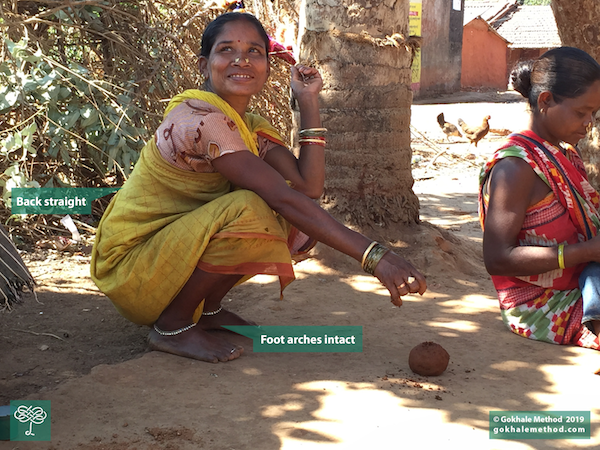
This woman from Orissa demonstrates a healthy, full squat with foot arches intact and a long, straight spine.
It is also the posture used for toilet activities in places with floor toilets, a trend which has recently made its way to the industrialized realm in the form of popular footstools such as the Squatty Potty. If you have ever gone camping in a place without Port-A-Potties, you have had good occasion to squat!
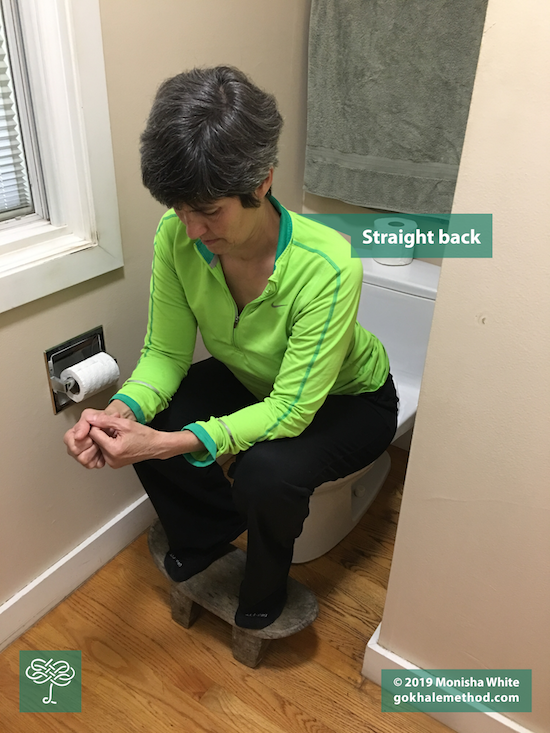
Using a simple footstool to sit on a toilet, supported with a straight back.
And women worldwide, especially in less-industrialized societies, have long used squatting during childbirth. Talk about ancestral posture.

Like mother, like child.

Women squatting in a tribal market in Orissa to sell vegetables. This is a very comfortable, sustainable posture they have grown up with.
The problem
Most people’s hip, knee, and ankle joints do not bend enough to allow the back to remain straight and the arches in the feet to remain intact.
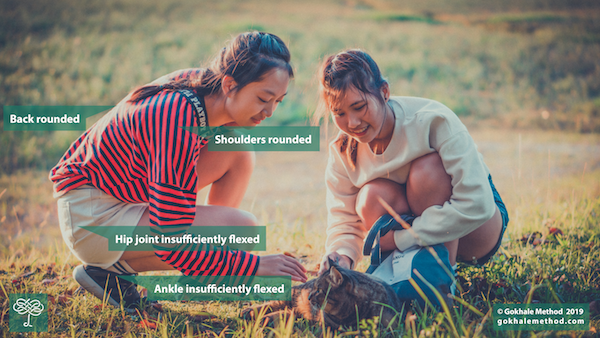
People in modern societies usually don’t have the hip/knee/ankle structure to do a full squat without rounding the back and compromising the feet.
The fix
Raise the heels or resort to a partial squat or B squat (one heel raised, the other down). Do not settle down all the way down on your haunches.
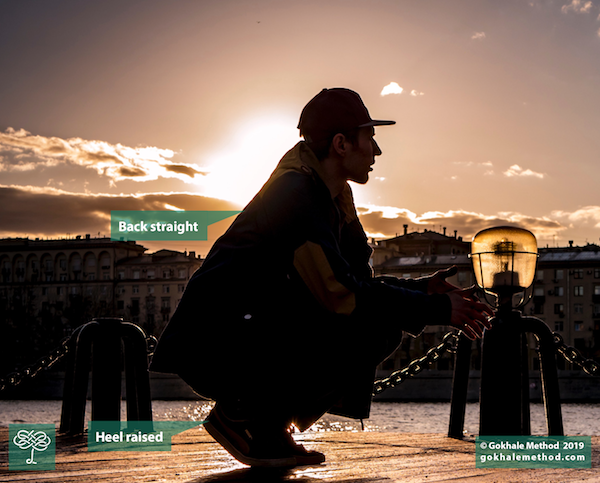
For most people, squatting with raised heels makes it possible to have a straight back.

A partial squat or B squat, with one foot on the ground (not visible) and the other foot with the heel raised. This facilitates a healthy, straight back posture.
In conclusion, for modern urban people to derive the benefits but avoid the pitfalls of squatting, consider raising your heels, or doing a “B squat” or partial squat. For going to the toilet, a Squatty Potty or low foot bench is useful. We recommend on working on your calf and quad flexibility to get low to the ground towards a squat, but do not insist on a full squat because it will likely involve some unhealthy compensations. And enjoy people watching in cultures where squatting is part of daily living. Every culture has its facilities and limitations and it’s fun that we’re all different!
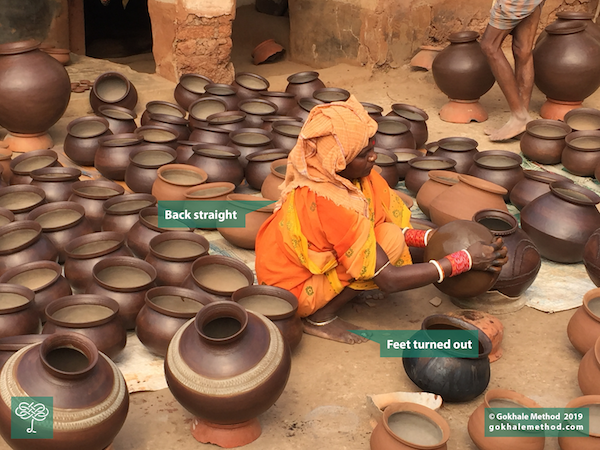
This woman squats for hours to add slip onto her pots. Orissa, India.

Comments
Kelly read and admired my
Kelly read and admired my book soon after it was published in 2008, and has successfully applied some of the principles in crossfit type workouts. One day, these principles will hopefully become universal. People need consistency in the messages they are hearing!
Thanks for another great post
Thanks for another great post, Esther. I have also noticed that the knees need to be wide enough that the torso drops between the knees. (This is also key to the Squatty Potty.) Wide knees helps me to squat much more easily and keep my feet flat. Then it's mostly about learning balance and stretching the groin muscles. But it's the exact opposite of what women are taught in the west. We're instructed to keep our knees clenched together as much as possible, so no more squatting after 4 or 5 years old!
So true! Our favorite way of
So true! Our favorite way of widening the legs (it's really the thighs that need to be out of the way of the pelvis) is by kidney-bean shaping the feet. This allows the femurs to rotate out of the way even with the feet close together. For beginners it's helpful to bean the feet and spread the legs, casting aside considerations of being "lady-like".
Thank you so much Esther for
Thank you so much Esther for your wonderful work! I learn so much from your articles.
It's really nice to hear that
It's really nice to hear that these articles are helpful - it's sometimes challenging to know exaclty what goes on in the ether!!
Add New Comment
Login to add commment
Login